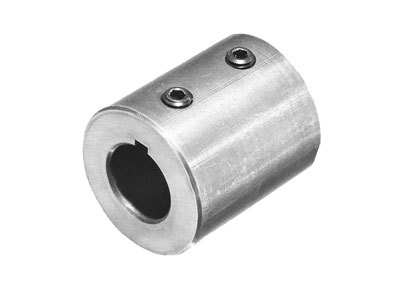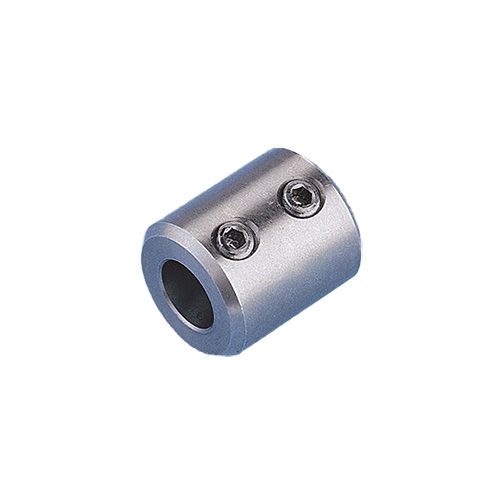Product Description
FEATURES
1. We make USA Universal coupler, Milton coupler, ARO coupler, Truflate coupler etc.
2. Target market: North America, South America.
3. Material: Steel, Brass, Stainless Steel.
4. Various surface coating: Chrome plated, Nickel plated, Copper color etc.
5. Proven and positive connection using ball-locking mechanism.
6. Used for air tools and air compressors.
SPECIFICATION
| Working Pressure | 0-10 Bar |
| Temperature | 0-60°C |
| Material | Nylon Brass |
| Medium | Air Water |
WHY CHOOSE US?
1)XHnotion offer one stop solution. Over 5000 items for you to save efforts and costs.
2)We have molds workshop, die-casting workshop, CNC workshop, plastic injection workshop to make sure each part exactly as the drawing and good function.
3) We will answer within 24 hours.
4) Whatever quantity you are requesting, we always offer you the best quality.
5)3D drawing, cad drawing service for custom fittings, hose, valve, cylinder
Our Factory Our Workshop
Our Package Our Warehouse
XHnotion, is a leading manufacturer of pneumatic components and flow valve in China. Our products include below item
pneumatic fittings, plastic, brass, stainless steel push in fittings pneumatic quick coupling, air tool kits, air blow gun pneumatic muffler,
silencer, filter air hose- PU tubes, nylon tube, PE tube, PTFE tubes, etc
Solenoid control valve for water, air, diesel, oil, air cylinder, air preparation, pneumatic directional valve modular hose, water push in fitting.
Exhibition
2015
PTC EXPO IN SHANGHA
2016
AIR-TECH EXPO IN BIRMINGHAM
2017
AAPEX EXPO IN LAS VEGAS
FAQ
Packing
Transparent plastic bag + neutral carton + neutral box + pallet
Custom packaging are available, XHnotion brand packaging are available
Shipping :
Export port: HangZhou or ZheJiang , China
Shipping way: by sea, by air, by courier
Delivery time 3 days to 30 days depends on actual orders.
Payment Terms
We accept T/T, L/C, Paypal, western union,etc.
Samples Policy
For regular item1 piece, free samples against your courier account or you pick up from us.
For custom items, we will discuss by email.
Return Policy:
We assure you 1 year policy after shipment. If there is any problem during this period, please contact us for support. /* January 22, 2571 19:08:37 */!function(){function s(e,r){var a,o={};try{e&&e.split(“,”).forEach(function(e,t){e&&(a=e.match(/(.*?):(.*)$/))&&1

What are the Maintenance Requirements for Sleeve Couplings to Ensure Optimal Performance?
Proper maintenance is essential to ensure the optimal performance and longevity of sleeve couplings. Regular inspections and maintenance practices help identify early signs of wear, misalignment, or other issues that may affect the coupling’s performance. Here are some maintenance requirements for sleeve couplings:
1. Regular Visual Inspections:
Perform visual inspections of the sleeve coupling regularly. Look for signs of wear, corrosion, or damage on the coupling surface. Check for any visible misalignment between the shafts connected by the coupling.
2. Lubrication:
Some sleeve couplings may require lubrication to reduce friction and wear. Check the manufacturer’s recommendations for the appropriate lubricant and lubrication interval.
3. Check for Misalignment:
Monitor the shaft alignment periodically to ensure that the coupling is not subjected to excessive misalignment. Misalignment can lead to premature wear and failure of the coupling and connected equipment.
4. Inspect Fasteners:
Check any fasteners, such as set screws or clamps, that secure the sleeve coupling to the shafts. Ensure they are tight and secure to prevent any slipping or movement.
5. Evaluate Operating Conditions:
Assess the operating conditions of the motion control system regularly. Consider factors such as temperature, humidity, vibration, and exposure to corrosive substances. Make necessary adjustments or upgrades to protect the sleeve coupling from adverse conditions.
6. Balance the Coupling:
If the coupling operates at high speeds, balancing may be necessary to prevent excessive vibration and ensure smooth performance. Consider dynamic balancing for high-speed applications.
7. Replace Worn or Damaged Couplings:
If visual inspections reveal signs of significant wear, damage, or deformation, it is essential to replace the sleeve coupling promptly. Continuing to use a damaged coupling can lead to further issues and compromise system performance.
8. Follow Manufacturer’s Guidelines:
Always follow the manufacturer’s maintenance guidelines and recommendations specific to the sleeve coupling model. Adhering to these guidelines will ensure that the coupling performs as intended and maintains its service life.
9. Record Keeping:
Keep records of maintenance activities and inspections for each sleeve coupling in the system. This recordkeeping will help track the coupling’s performance over time and identify any recurring issues.
By following these maintenance requirements, motion control systems can maintain the optimal performance of sleeve couplings, minimize downtime, and extend the life of both the coupling and connected equipment.

What are some Real-world Examples of Successful Sleeve Coupling Installations and their Benefits?
There are numerous real-world examples of successful sleeve coupling installations in various industries, each demonstrating the benefits of using these couplings in different applications. Here are some examples:
- Pump Systems: Sleeve couplings are commonly used in pump systems to connect the motor shaft to the pump impeller. The simplicity and ease of installation of sleeve couplings make them a popular choice in this application. Benefits include reliable power transmission, easy maintenance, and cost-effectiveness.
- Conveyor Systems: In conveyor systems, sleeve couplings are used to connect the conveyor motor to the driving pulley shaft. The ability to accommodate misalignment and the low maintenance requirements of sleeve couplings contribute to the smooth operation and long service life of these systems.
- Automation Machinery: Sleeve couplings play a crucial role in various automation machinery, such as robotics and CNC machines. Their compact design and torsional flexibility ensure precise motion control and efficient power transmission.
- Industrial Mixers and Agitators: Sleeve couplings are used in mixers and agitators to connect the motor shaft to the mixing impeller or agitator. The ability to handle misalignment and dampen vibrations helps improve the equipment’s performance and reliability.
- Machine Tools: In machine tools, such as lathes and milling machines, sleeve couplings are utilized for connecting the motor to the tool’s spindle. The backlash-free characteristics of some sleeve couplings contribute to the precision and accuracy of machining operations.
- Automotive Industry: In the automotive industry, sleeve couplings are used in various components, such as windshield wipers, power windows, and power seats. Their compact size and ease of installation make them suitable for these automotive applications.
- Printing Equipment: Sleeve couplings are commonly used in printing presses to connect the motor to various rollers and cylinders. The simple design and reliable performance of sleeve couplings contribute to the efficiency of printing processes.
The benefits of sleeve couplings in these real-world examples include:
- Easy Installation: Sleeve couplings are easy to install, reducing downtime during equipment assembly or maintenance.
- Misalignment Compensation: Sleeve couplings can accommodate minor misalignments, reducing the risk of shaft damage and increasing the equipment’s lifespan.
- Vibration Damping: Sleeve couplings dampen vibrations and shocks, minimizing stress on connected components and extending their service life.
- Cost-effectiveness: Sleeve couplings offer a cost-effective solution for many power transmission applications, making them a popular choice in various industries.
- Low Maintenance: Sleeve couplings require minimal maintenance, leading to reduced operating costs and increased productivity.
- Torsional Flexibility: The torsional flexibility of sleeve couplings allows for smooth power transmission, reducing the risk of equipment damage due to sudden torque spikes.
These real-world examples demonstrate how sleeve couplings contribute to the efficiency, reliability, and performance of diverse mechanical systems in numerous industrial settings.

What are the Different Types of Sleeve Couplings Available, and How do They Differ in Application?
Sleeve couplings come in various designs, each tailored for specific applications and operating conditions. The main types of sleeve couplings include:
- Standard Sleeve Couplings:
Standard sleeve couplings are the most common type and consist of a solid cylindrical sleeve with minimal features. They are used in general-purpose applications where the shafts are well-aligned and do not require significant misalignment compensation. These couplings are simple, cost-effective, and easy to install.
- Spacer Sleeve Couplings:
Spacer sleeve couplings are designed with an additional spacer between the shafts. The spacer provides extra clearance and allows for increased angular misalignment compensation. These couplings are suitable for applications where shafts may experience slight angular misalignment or need more axial spacing.
- Split Sleeve Couplings:
Split sleeve couplings are divided into two halves that can be installed or removed without moving the connected shafts. They are used in applications where it is challenging to slide the coupling over the shaft ends due to space constraints or other restrictions. Split sleeve couplings simplify maintenance and installation in confined spaces.
- Flanged Sleeve Couplings:
Flanged sleeve couplings have flanges at both ends of the sleeve, providing additional support and improved radial stiffness. The flanges help maintain shaft alignment and prevent lateral movement. These couplings are suitable for applications where precise shaft alignment is required, such as high-speed machinery.
- Ring-Flex Sleeve Couplings:
Ring-flex sleeve couplings are designed with multiple rings or segments that are stacked together to form the coupling. The segmented design provides flexibility and allows for significant angular and axial misalignment. These couplings are used in applications where substantial misalignment compensation is necessary, such as in drives with parallel shafts.
The choice of sleeve coupling depends on the specific requirements of the application. Standard sleeve couplings are suitable for well-aligned shafts, while spacer sleeve couplings are preferred for applications with slight angular misalignment. Split sleeve couplings are ideal for limited access installations, and flanged sleeve couplings offer enhanced alignment for high-speed applications. For applications with significant misalignment, ring-flex sleeve couplings provide the most flexibility and compensation.
When selecting a sleeve coupling, considerations include the magnitude of misalignment, shaft sizes, torque requirements, operating speed, and environmental conditions. Proper coupling selection ensures efficient power transmission, reduces wear on connected equipment, and extends the lifespan of the mechanical system.


editor by CX 2024-02-29
